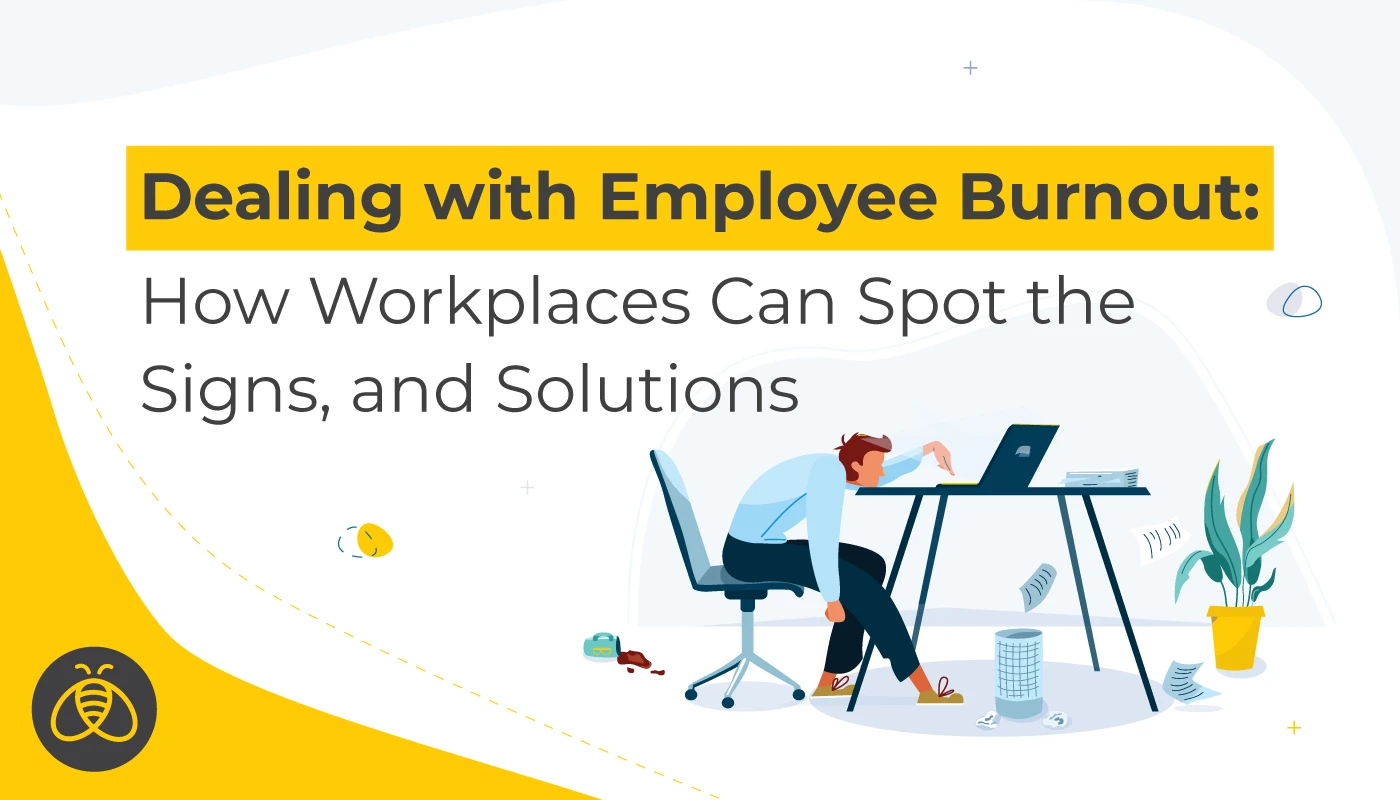Dealing with Employee Burnout: How Workplaces Can Spot the Signs, and Solutions
By: Benefits by Design | Tuesday May 16, 2023
Updated : Tuesday May 28, 2024
Employee burnout has a significant negative impact on workplace’s employees, and through them, your business. In the wake of the COVID-19 pandemic, record inflation, and the continuing mental health crisis in Canada, this is a growing concern for Canadian employers.
Let’s look more closely at the effect burnout can have on the workplace and how employers can overcome it.
What is Employee Burnout?
Employee burnout looks different for everyone but is largely due to chronic workplace stress not being addressed properly. No matter the source of this stress (there are many in workplace), employee burnout can lead to feelings of physical, mental, or emotional exhaustion that negatively impacts performance. This burnout can lead to negative side effects like decreased productivity and employee engagement, increased absenteeism, and higher turnover rates.
In fact, the O.C. Tanner Institute 2020 Global Culture Report found that companies with moderate to severe burnout are almost 4 times more likely to have a decrease in highly engaged employees. It also found that companies have an 87% decrease in the likelihood of employees staying, a 22% decreased work output, and 41% decrease in the perception of the employee experience.
As for employees, it reports that they are 63% more likely to take a sick day, 23% more likely to visit the emergency room, and 2.6 times as likely to leave their current employer.
Signs of Employee Burnout
Employee burnout comes in many forms, but can all lead to decreases in productivity and engagement that negatively impacts your business. Whether the source of their fatigue comes from a physical, mental, or emotional source, the signs of employee burnout are clear.
- Lack of interest or enthusiasm for work
- Inattentiveness to detail
- Disengagement in workplace activities
- Negative attitude or irritability
- Stubbornness and an unwillingness to listen to others
- Increased absenteeism
- Declines in productivity or quality of work
Causes of Employee Burnout
Every employee’s situation will be different, therefore so will the causes of their burnout. However, there are a few common culprits that frequently lead to employee burnout in a workplace:
- Working long hours or a lot of overtime
- Skipping or shortening breaks
- Lack of recognition for exceptional performance
- Unrealistic deadlines or professional and workplace goals
- Lack of independence or autonomy in the workplace
- Staff shortages
Some of these causes may be unavoidable at times, such as the staff shortages employers have been experiencing since the onset of the COVID-19 pandemic. However, it’s important to recognize these causes and address them as best as possible to avoid all of the negatives that come with employee burnout. Establishing work-life balance is crucial as it can mitigate causes like stress and long hours. Employers can also help reduce meal planning stress—a significant contributor to employee burnout—by offering convenient meal prep solutions that simplify daily routines, giving employees more time to relax and recharge.
7 Ways to Recover from Burnout
We have all had days when we feel like salmon swimming upstream: we exert our best effort, only to be swept back by the forces beyond our control. However, burnout is something that both employers and employees can work towards overcoming.
Let’s look at some ways employers can combat employee burnout.
1. Encourage self-care
Make sure your employees have time to take breaks, eat lunch away from their desks, and exercise. Encourage them to trade screen time for shuteye and skip fast food in favor of healthier options.
2. Address the six areas that cause burnout
Workload, lack of control, inadequate rewards, unfairness, lack of community, and working against work values are all common sources of employee burnout. Make sure you are addressing these issues and providing your employees with the support they need to thrive.
3. Encourage engagement
Make sure your employees are engaged with their work by providing them with opportunities for growth and development. Ask them where they would like to be in the future and what a suitable place to work would look like for them.
4. Create a better match
If your employees are struggling with burnout, see if you can create a better match between their skills, interests, and job duties. This might involve diversifying their job description, transferring them to another team or location, or offering more flexible working arrangements.
5. Be open to big decisions
If creating a match is not possible, your employee may need to consider a change of scenery like a new role or career path. Encourage them to think about what is best for their long-term career goals.
6. Encourage delegation
Make sure your employees are not feeling over-responsible for their work. Encourage them to delegate tasks when possible and offer support when needed.
7. Encourage diversification of time
Encourage your employees to pursue hobbies and interests outside of work. Offer flexible scheduling and generous time off to allow for rest, travel, and other activities that promote well-being. By prioritizing the well-being of your employees, you will create a more productive and engaged work environment.
In conclusion, employee burnout can have a significant impact on your business, but it can be prevented by promoting work-life balance, providing opportunities for professional development, encouraging breaks and time off, creating a positive work environment, monitoring workload, and offering employee assistance programs. By taking these steps, you can help ensure your employees remain motivated, engaged, productive, and contribute to the success of your organization.


